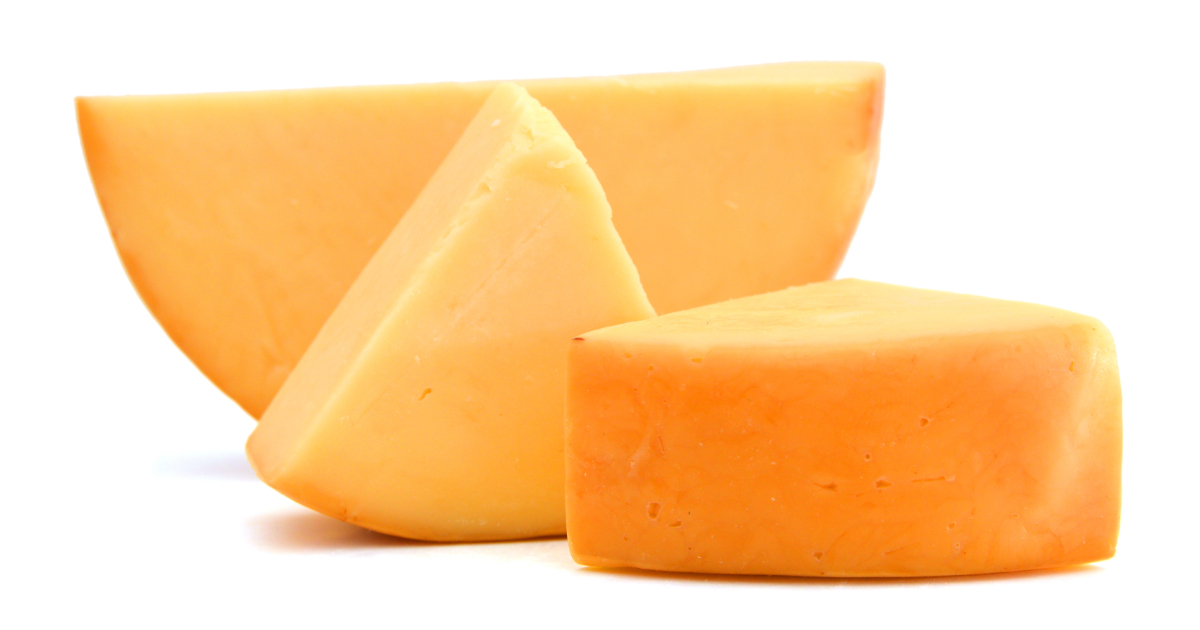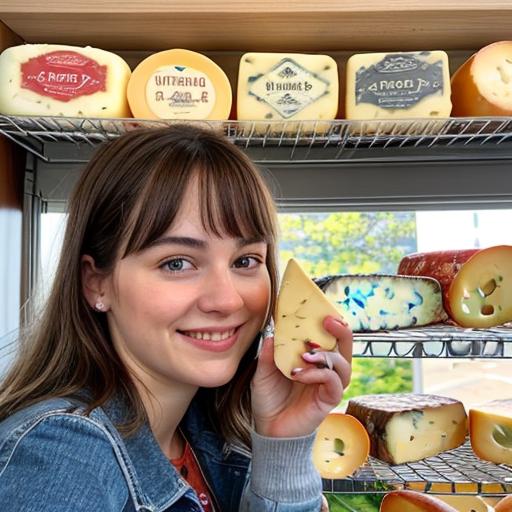Muenster and cheddar are two popular types of cheese, each with their own unique flavors, textures, and uses.

But how exactly do they compare?
Nutrition
Here's how muenster and cheddar cheese compare nutritionally:
Calories and Macros
- Muenster: 104 calories, 9g fat, 5g protein per 1 oz serving
- Cheddar: 113 calories, 9g fat, 7g protein per 1 oz serving
Muenster is a bit higher in calories and total fat. Cheddar offers more protein. Both are low carb options, providing less than 1g net carbs each.
Vitamins and Minerals
- Vitamin A: Cheddar is richer, providing 12% DV vs 8% DV per serving
- B Vitamins: Cheddar also contains higher amounts of riboflavin, niacin, and vitamin B12
- Calcium: Both offer about 10% DV per serving
- Sodium: Muenster contains nearly 2x as much sodium (150mg vs 80mg per oz)
So if you're looking to boost intake of B vitamins and vitamins A, K, choose cheddar. Muenster offers more calories and fat.
Key Takeaway: Muenster is slightly higher in calories and fat compared to cheddar per serving. Cheddar contains more vitamins and is lower in sodium.
Taste and Texture
The most noticeable difference between the two cheeses is their flavor and texture profiles:
- Taste: Muenster is mild, creamy, and nutty. Cheddar ranges from mild to sharp in flavor with tangy, acidic notes.
- Texture: Smooth and soft for muenster. Cheddar is firm and crumbly in texture.
Aging also affects their taste and texture differently:
- Aged muenster develops more tang and bite.
- Cheddar becomes intensly sharp and crumbly with age.
So muenster offers a milder eating experience compared to the sharper bite of aged cheddars.
Best Uses
Due to their different textures and meltability, muenster and cheddar work better for certain dishes:
Muenster Cheese
The smooth, spreadable texture makes muenster perfect for:
- Grilled cheese
- Quesadillas
- Burgers
- Mac and cheese
- Paninis
- Pizza
It melts extremely well, ideal for oven baking or grilling. The mild flavor also lets other ingredients shine.
Cheddar Cheese
The firm, crumbly texture of cheddar is great for:
- Cheese boards
- Cheese and cracker snacks
- Salads (crumbled on top)
- Omelets
- Enchiladas and tacos
Aged cheddars can handle intense heat better without becoming greasy. The sharper taste also balances richer foods.
So for melted applications, choose muenster. Cheddar works better as a crumbled topping or in less cooked preparations.
Buying and Storage
When shopping, check for signs of quality cheese:
Muenster
- Smooth, soft texture without cracks
- Bright orange rind
- Mild nutty smell
- No mold or dry spots
Cheddar
- Hard, crumbly texture
- Creamy white to deep orange color
- Sharp, tangy smell
- No mold present
For storage, keep all cheese tightly wrapped in the fridge. Allow muenster and cheddar to warm up 20-30 minutes before serving for best flavor and texture.
Key Takeaway: Check the texture, smell, and appearance when buying muenster and cheddar. Store tightly wrapped in fridge for up to several weeks.
FAQs
Is muenster or cheddar healthier?
Cheddar cheese is lower in calories and sodium. It also contains higher amounts of protein, vitamins A, B2, B3, and B12 compared to muenster cheese.
What's a good muenster cheese substitute?
Havarti, swiss, monterey jack, or gouda all work well as smoother, milder substitutes for muenster cheese.
What's a good cheddar cheese substitute?
For sharp cheddar flavor and crumbly texture, substitute with parmesan, asiago, manchego, or pepper jack cheese.
Can you freeze muenster or cheddar cheese?
Yes! Freezing is a great long term storage method for both muenster and cheddar cheese. Thaw overnight in the fridge before using.
What wine pairs best with muenster or cheddar?
Muenster matches well with riesling or pinot gris. Cheddar pairs nicely with cabernet sauvignon or chardonnay.
Is the rind on muenster cheese edible?
Yes, the orange rind caused by annatto powder is safe to eat. It's a matter of personal preference - some enjoy the subtle extra flavor.
Conclusion
While muenster and cheddar are two of the most popular cheeses today due to their incredible versatility and flavors, they differ quite a bit when it comes to taste, texture, uses, and even nutrition.
Muenster cheese lives up to its reputation with its ultra smooth, spreadable texture and mild nutty flavor that melts extremely well. It works great in grilled sandwiches, baked dishes, pizza, and more.
Cheddar cheese offers that classic sharp, tangy kick in flavor (especially when aged) with a firm, crumbly texture perfect for snacking or crumbling over salads and tacos.

